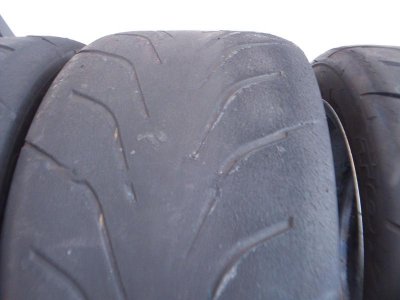The rears of my Toyo R888s are worn to the bottom of the tread - past the wear markers. I am wondering if I have one weekend left in them before they start to show cord? I have never corded any tires as I usually pitch them when I go below the wear markers. However, most people I talk to use their R compounds until they cord.
BTW: I have to drive to and from the track (180 each way) so as soon as cord shows - I am done because I will have to drive home with them.
I am just wondering if anyone has had any experience of how much longer these tires go before cording once you are through the tread? I have one track weekend left this season and trying to figure out whether to replace them (Nitto NT01s this time) or see if I can get another two days out of them.
And yes, I know I think I was running too much pressure in the rears as they were wearing pretty even until last weekend when I noticed the middle wore much more than the rest of the tire. I was running 35/35 cold, which ended up 38/42 hot. Fronts are wearing pretty even but looks like I need to drop the pressure on the rears a bit.
BTW: I have to drive to and from the track (180 each way) so as soon as cord shows - I am done because I will have to drive home with them.
I am just wondering if anyone has had any experience of how much longer these tires go before cording once you are through the tread? I have one track weekend left this season and trying to figure out whether to replace them (Nitto NT01s this time) or see if I can get another two days out of them.
And yes, I know I think I was running too much pressure in the rears as they were wearing pretty even until last weekend when I noticed the middle wore much more than the rest of the tire. I was running 35/35 cold, which ended up 38/42 hot. Fronts are wearing pretty even but looks like I need to drop the pressure on the rears a bit.
Attachments
Last edited:









